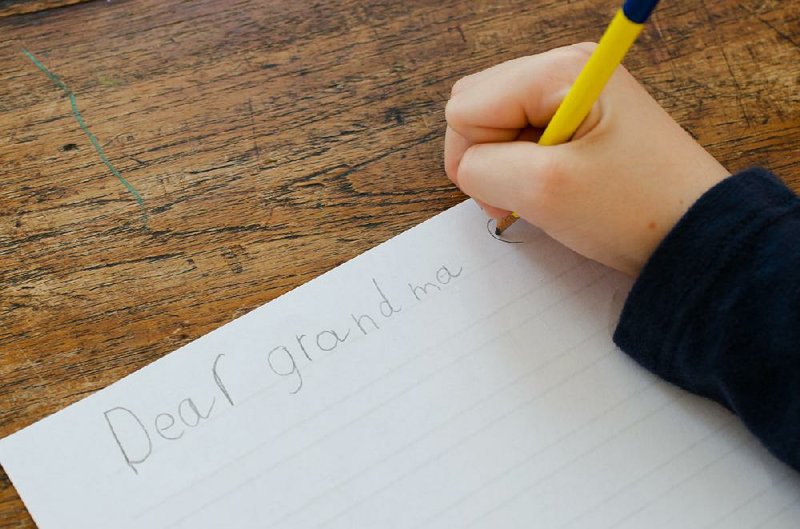If you want to cause a stir, put two experts on the social graces together, and bring up the subject of thank-you cards. You know, those little notes your mother told you to write that you thought were a waste of time and postage?
"My friends and I all roll our eyes about this generation," says Ellen Prague, owner of The Paper Shop, in Winter Park, Fla. "These kids don't care about any of that. You're lucky if you get a text."
"If the Baby Boomers don't teach the next generation, this will be a dying art," laments Maureen Hall, owner of Maureen H. Hall Stationery and Invitations, another chic stationery store in the same town.
"Parents need to start early," Hall adds. "Teaching the next generation the art of proper correspondence goes along with teaching them the other social graces like proper manners and proper grammar."
"And how to set a table," I chime in, just to stir the pot.
"Don't get me started," Hall said. "They don't know how, so they roll up all the silverware in a napkin."
As someone in constant pursuit of more gracious living, I have to say, at the risk of sounding like Miss Thistlebottom, I wholeheartedly agree with these women.
Expressing your gratitude in writing is not only proper etiquette, but in this digital age of instant messaging, handwritten notes are a refreshing personal touch. They are the grace notes in today's hectic, techno life. "They elevate you," says Prague.
"Handwritten notes have a greater impact than any other form of correspondence, much better than a phone call, email or text," Prague adds. "Those communications are all transient. Notes are tactile and visual. Even if you throw them away, their memory lingers."
Fortunately, if you didn't get this lesson as a child, (or you've lapsed), it's not too late to learn.
"I'm seeing more young professionals who didn't come from homes where they learned about the finer points of living," said Prague. "They come in waving a hand-written correspondence card they received from a colleague and say, 'This is cool, I need some of these.'"
There's hope yet.
To kick your gracious-living level up a notch, start by getting nice stationery. "Fine stationery falls into the same category as fine linens," Hall says. "It's something every proper home should have."
Personalize it with your name, if possible. (See last week's column.) "If you have the right stationery on hand, the moment will come when you will be glad you do," said Prague.
Now use it. Here's how, according to these experts:
When to send? Write a personal note when someone has shown you a kindness, said Prague, if they had you to their home for dinner, referred you a customer, or gave you a gift. "You don't do this to get business; you do this because someone has put themselves out for you." Also send notes of congratulations, encouragement, sympathy or just to tell someone you're thinking of them.
Be timely. Write your note within 24 hours, or as soon as possible after the event or receiving a gift. "If you write the note in a timely fashion, the thoughts are still fresh in your mind and genuine," said Hall. However, sending a late note of thanks is better than not sending one at all.
Do not apologize. If you are late with your note, don't say, "Sorry this is so late," said Prague. "Just write the note as if it were on time." The rule that brides have a year to send thank you notes still holds, though they should try to write them soon to let those who sent gifts know the gift arrived.
Keep the back clean. If you can avoid it, try not to write on the back of a folded note or correspondence card, said Prague. On a folded card, write on the bottom half of the card first, then on the top half if you need more room. On a correspondence card, try to keep all your writing on the front. That said, both experts agree, the world won't stop turning if you have more to say, and need to write on the back.
Always handwrite. No typewritten, cut and paste notes, please. If your penmanship has gotten wobbly with age, try your best, be brief, and know that the person receiving it will be all the more appreciative for the effort it took to write.
What to say? Be sincere, and make it about them, not you, Hall said. The note can be short and simple, but should be specific. Start by saying "Thank you for..." and fill in the rest. Next, mention the gift specifically. (Don't say "the gift," say "the beautiful yellow silk scarf.") Then say how you plan to use or wear it. Add a sentence about the next time you hope to see the person, and sign off.
It's the thought that counts. For those who find the idea of writing a note paralyzing, Hall says, "Get past that, and realize that any note is appreciated." Remember, it's not what you say in the note, but rather the thought that went into writing it that others value. Now raise your gratitude game.
Syndicated columnist Marni Jameson is the author of five home and lifestyle books, including Downsizing the Family Home -- What to Save, What to Let Go
HomeStyle on 06/22/2019

